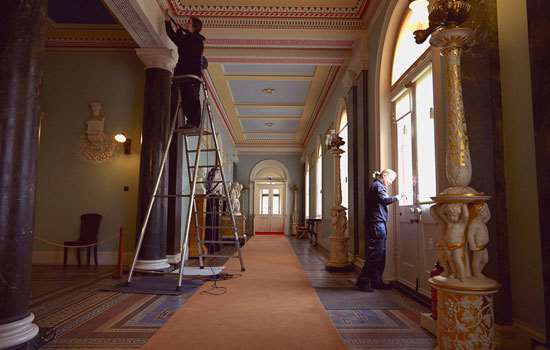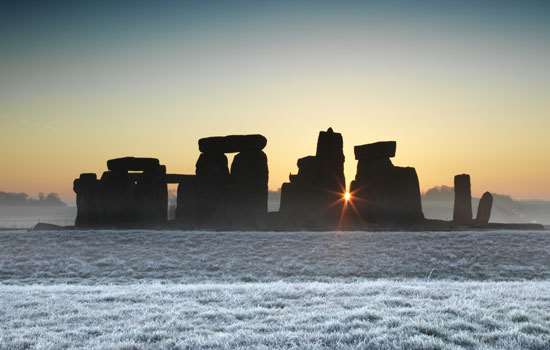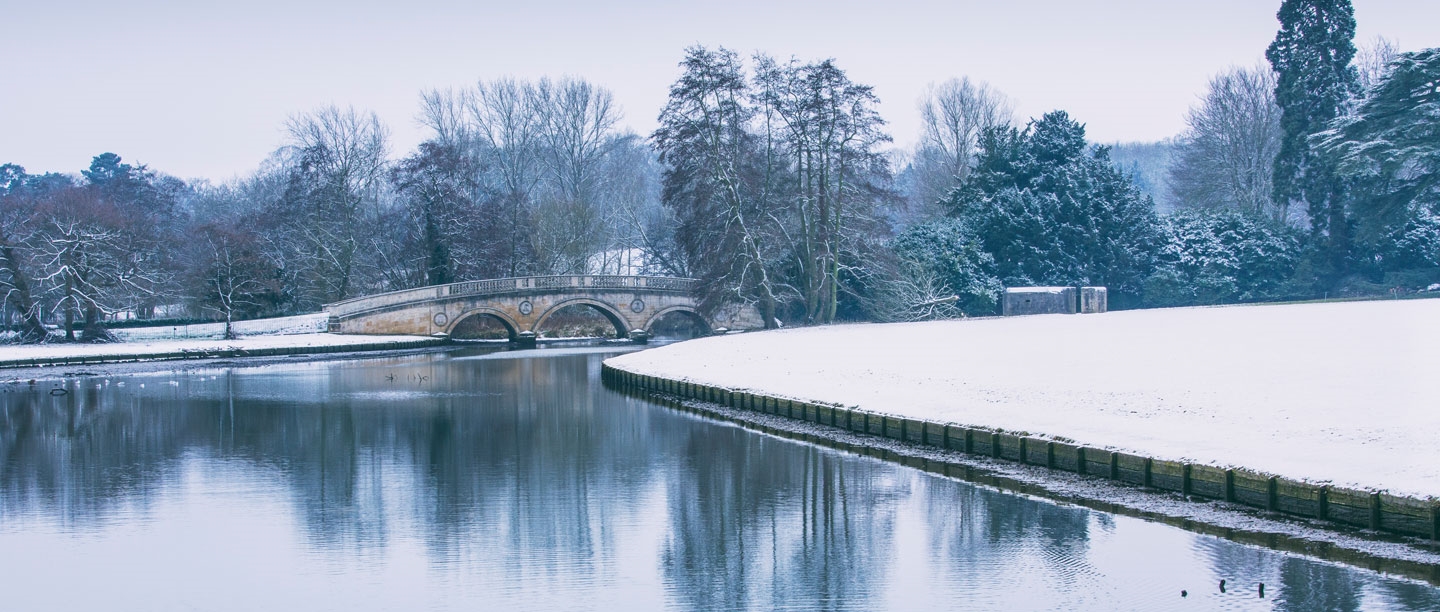NEOLITHIC: DURRINGTON WALLS, WILTSHIRE
Evidence from Durrington Walls, near Stonehenge, has given a real insight into the way the people living there kept themselves going through the winter months. Huge amounts of animal bone were found along with pottery fragments, some with residues still attached. People were cooking and eating huge amounts of meat, mostly pig and cattle. There is evidence of meat being spit roasted and of beef being cut up, most likely for stews, while some pots had traces of milk.
Each of the houses excavated had a central hearth, which would have provided warmth and light during the long winter nights. We can imagine that the houses had wattle and daub walls and thatched roofs, providing welcome shelter during the winter months. You can explore recreated Neolithic houses based on the evidence found at Durrington Walls when you visit Stonehenge.
Heather Sebire, senior property curator, Stonehenge
IRON AGE: CHYSAUSTER ANCIENT VILLAGE, CORNWALL
Though winters were mild, gales and heavy rain meant that the thatched roofs needed regular attention. There was much work to do in the fields: ploughing before the frosts broke up the soil and shepherding to keep predators away. The animals – sheep, goats, cattle and pigs – drew on hay stockpiled since the summer.
The key to making it through the winter was having enough food stored from the harvest. Porridge and stews were the usual fare, and bread was made almost every day. The evenings were probably spent in the dimly lit houses sharing histories and myths.
Win Scutt, properties curator (West)
ROMAN: HADRIAN’S WALL
Hadrian’s Wall was home to thousands of soldiers and civilians from across the Roman Empire. For many it was probably the most northerly place that they had ever lived. Fortunately, some buildings – such as the commander’s house at Chesters Roman Fort – were equipped with heating systems called hypocausts. The hot air from a fire circulated beneath raised floors to keep the room warm.
Ordinary soldiers at Chesters were not so lucky. They relied on fires in their barracks or had to resort to winter uniforms. Off-duty soldiers could escape the cold at the bathhouse, which contained a sudatorium (similar to a modern sauna) and a caldarium (like a steam room). A soak in the large bath may have helped shake off the winter blues but it was best to leave the cold plunge for the summer.
Andrew Roberts, properties historian
MEDIEVAL: VARIOUS SITES
Evidence of the strategies used to get through winter can be gleaned from several of our sites. An 11th-century manuscript once owned by Battle Abbey is decorated with images showing that preparing for winter was a year-round task, including gathering the harvest in June and July and slaughtering livestock in December. For peasants, such as those who lived in the village of Wharram Percy, winter involved a lot of hard graft. But it was also marked by celebrations.
The greatest festivities were at Christmas. The monks’ diet at Rievaulx Abbey was enlivened by fish, wine and spices, while Christmas provided a break from manual labour for servants. The festivities ended on the Feast of the Epiphany on 6 January. The following Monday was Plough Monday, when the daily toil started again.
Michael Carter, senior properties historian
TUDOR: PENDENNIS CASTLE, CORNWALL
In Tudor times Pendennis Castle was a lonely place, on an exposed headland that bore the brunt of bitterly cold winter weather. The soldiers of its tiny garrison had to keep watch for ships coming into the mouth of the river Fal below. Getting through the winter was all about preparation. Food was seasonal and adequate stores of fresh and preserved food had to be made to last through the cold months.
Taking a turn on watch on the roof must have been desperately cold and there was a need for very warm woollen clothes, hats and gloves and a ready supply of hot food. The castle was provided with wood and peat to burn in the big fireplaces to keep away the cold seeping through the stone walls, and to maintain a pot of simmering food.
Paul Pattison, senior historian
STUART: BOLSOVER CASTLE, DERBYSHIRE
At Bolsover Castle, warmth and beauty were entwined to spectacular effect. No large room in a Stuart castle was complete without a fire so, when Sir Charles Cavendish oversaw an elaborate programme of interior design, they made the fireplaces ornate masterpieces. Those in the most important rooms were decorated in marble and alabaster, and classically inspired columns framed the fires.
Tapestries were also common means of combining decoration with warmth. They could be moved between rooms and changed according to the season. Bolsover was decorated with various sets of bespoke tapestries, including those depicting scenes from the Bible in the Star Chamber (pictured).
Andrew Roberts, properties historian
GEORGIAN: AUDLEY END HOUSE AND GARDENS, ESSEX
Through much of the Georgian period, Audley End, like most country houses of the time, relied for its warmth on open fires. In the 19th century, Richard Aldworth Neville, 2nd Lord Braybrooke, attempted to make the mansion more comfortable to live in over winter.
He installed Bath stoves in at least 10 of the bedrooms, and register grates in the library, north parlour and state bedroom suite, which raised the fire above the hearthstone to direct more heat into the room. In the 1820s, a cockle stove was introduced in the basement, providing hot air central heating for the hall and ground floor gallery.
Andrew Hann, properties historians’ team leader
VICTORIAN: OSBORNE, ISLE OF WIGHT
Osborne House during the winter must often have been cold and draughty as Queen Victoria insisted on keeping doors and windows open to let in fresh air, despite the protests of her family. The house, though, actually had a sophisticated central heating system due to Prince Albert’s interest in modern technology.
A boiler in the basement of the pavilion heated air, which was circulated around the building through ducts concealed around the stairwell. All the rooms were also warmed by open fires, and the bathrooms had piped hot water. Even the servants’ dormitories were heated, with the Indian servants being provided with corner heating stoves when they were given separate accommodation in 1887.
Andrew Hann, properties historians’ team leader
20TH CENTURY: ELTHAM PALACE AND GARDENS, LONDON
Stephen and Virginia Courtauld loved travelling and were usually away from Eltham Palace during the cold winter months. Between December 1936 and March 1937 they crossed Africa, starting in Egypt and working their way down to Cape Town. They particularly loved cruising in their luxurious motor yacht Virginia, which could accommodate the Courtaulds plus up to six guests.
Had they remained at Eltham, the Courtaulds would have had the benefit of underfloor heating in all the main rooms, electric fires in the bedrooms and heated towel rails in the en-suite bathrooms, so they and their guests would have been able to keep toasty warm.
Andrew Hann, properties historians’ team leader
You might also be interested in
-

Members' exclusive content
Discover more content exclusively for Members, including videos, downloads and backdated issues of the Members' Magazine.
-

Go behind the scenes
Have a look at what happens during the winter season at Queen Victoria's Isle of Wight holiday home.
-

Find a place to visit
Step into England's story at one of over 400 historic places. Get closer to where history happened, discover our range of epic events and find your next adventure.
